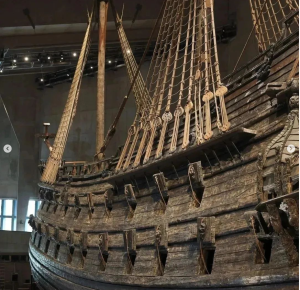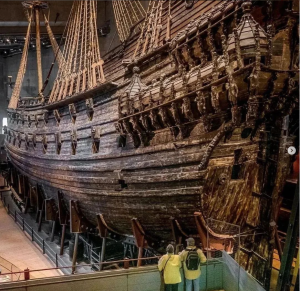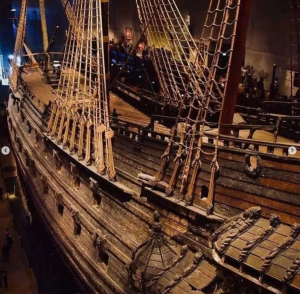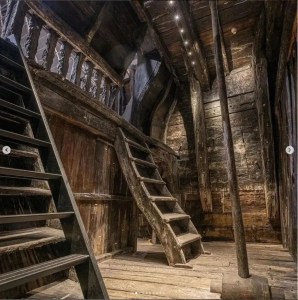
A Glimpse Into the Past
In the heart of Stockholm, Sweden, lies a captivating testament to both naval engineering prowess and human ambition.
The Vasa, an awe-inspiring warship of the 17th century, stands as a haunting reminder of a grand endeavor that tragically fell short. This remarkable vessel, once intended to showcase Sweden’s naval supremacy, now serves as a symbol of resilience, restoration, and historical preservation.
Yet, barely a kilometer from her launch site in Stockholm harbor, she sank, taking with her the lives of approximately 30 sailors and a trove of historical artifacts. Her story is a poignant reminder of the ambitions, technological challenges, and tragedies of 17th-century seafaring life.

The Recovery of a Legend
Commissioned by King Gustavus Adolphus in 1625, the Vasa was envisioned as a majestic warship that would command the Baltic Sea. Crafted with unparalleled attention to detail .
the vessel was adorned with intricate sculptures, lavish carvings, and vibrant paintwork, reflecting the artistic craftsmanship of the era. Standing tall with towering masts, this mighty warship was a sight to behold, a true marvel of its time.

However, despite the careful planning and meticulous craftsmanship, tragedy struck on August 10, 1628, when the Vasa set sail on her maiden voyage.
A Window into the 17th Century
Just moments after leaving the harbor, a gust of wind caught the ship, causing it to heel over and ultimately sink, plunging the magnificent vessel into the depths of the Baltic Sea.
For centuries, the Vasa lay forgotten beneath the waves, lost to the annals of history.
Yet, in the mid-20th century, her story resurfaced. A remarkable salvage operation was launched to retrieve this lost relic, a Herculean task that required innovative engineering techniques and unwavering determination. Finally, in 1961, the Vasa was triumphantly raised from the seabed, bringing to light a treasure trove of maritime history.
The preservation and study of the Vasa offer invaluable insights into the technological, social, and political dimensions of the 17th century. The ship is a testament to the ambitious naval arms race of the period, reflecting the power dynamics and conflicts that shaped Europe. The artifacts recovered from the Vasa, from weapons and tools to clothing and personal items, provide a snapshot of life in a bygone era, revealing the human stories intertwined with the ship’s history.
Furthermore, the Vasa’s preservation challenges and the innovative techniques developed to conserve her for future generations underscore the importance of maritime archaeology and conservation in understanding our past. The lessons learned from the Vasa extend beyond her own story, contributing to the preservation of other historical shipwrecks and artifacts around the world.

Preserving Our Maritime Heritage
The story of the Vasa is a powerful reminder of the importance of protecting and preserving our cultural heritage. As we marvel at the beauty and complexity of this 17th-century warship, we are reminded of the fragility of history and the efforts required to keep it alive for future generations. The Vasa’s preservation is a testament to the dedication of conservators, historians, and the public to maintaining a link with our past.

In an age where the past often seems distant and disconnected from our fast-paced lives, the Vasa serves as a tangible connection to the ambitions, hopes, and tragedies of our ancestors. It is our duty to protect such relics of human endeavor, ensuring that they continue to educate, inspire, and remind us of our shared heritage. The protection of antiquities like the Vasa is not just about preserving objects; it’s about safeguarding the stories, lessons, and legacies they carry.


